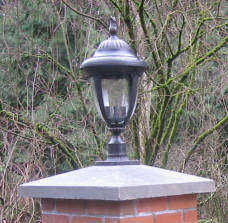This website has grown out of my own needs over the years. As I have come across and solved problems, I found I needed to organize the solutions so I could quickly refer to the them again. My interest in web development led to the development of the pages on this site, which is also an ideal means for sharing with people facing similar problems.
I learned HTML mainly from the website W3schools.com, which is also where I picked up JavaScript and CSS. I use JavaScript to do computations in the calculators and CSS for formatting the HTML pages. W3schools have good tutorials on these and other subjects and I do recommend them to anyone interested in learning the fundamentals of website development.
I started working on the resistor calculator in the mid 1980's on my first computer, a Sinclair ZX Spectrum 128, using its BASIC interpreter. Later it became a compiled 'C' program developed on a '386 PC, and now it has become a JavaScript implementation on this website. Calculations that could take up to a minute on the Spectrum now compute in the blink of an eye, thanks to the enormous development in PC hardware.
Early in life I trained as an electronics technician. Later I studied Electrical Engineering and that is where I was exposed to Linear Algebra, a branch of mathematics used to solve systems of equations in an efficient way. Techniques of Linear Algebra, as it turned out, would be the way to solve compound angle problems, although this was not apparent to me at first. Electrical engineers must take some simplified mechanical and civil engineering courses, these were called Statics and Dynamics. Here we learned to apply techniques from Linear Algebra to solve structural problems involving forces, geometry, and angles. Specifically, it was the dot-product and cross-product of 3-dimensional vectors that would simplify compound angle problems.

One of my first compound angle problems surfaced as I was building a brick entry on the driveway. There would be brick walls on each side of the driveway, ending in posts for the gate and the outer ends. The brick posts needed caps, and I had seen attractive cast concrete caps in the shape of low pyramids. However, I was unable to buy suitable caps, and the ones I did find were quite expensive. I decided to build forms to cast my own caps. As I started to plan the compound cuts needed for the forms I was surprised how difficult it was to solve using trigonometry alone. I spent weeks turning wood blocks in my hands and working on the math problem. It was Linear Algebra that finally allowed me to find a solution. After all that work I needed to capture the method in a way that I could easily reuse, and the compound angle calculator was born.
For 29 years I have made my living designing analog and digital electronics circuits for instrumentation used in dimensional metrology. My personal interests include wood working, metal working, various DIY projects, beer brewing, cider making, bee keeping, IoT, and many more.
I hope you found this site useful. The calculator pages have benefited from comments and suggestions by readers. If you like you can drop me a line at the link below.
Bjorn JanssonComments and suggestions to webmaster@jansson.us